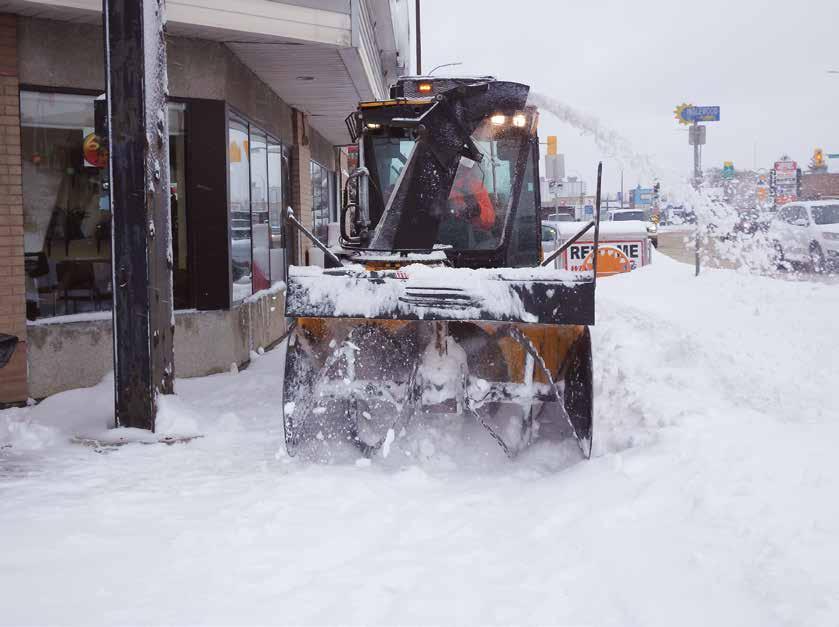A numbers game The City of Lethbridge learns to manage unpredictable winters By Shayna Wiwierski
A
Southern Alberta city saw lower costs associated with snow and ice control than other similar provincial communities from 2012 to 2014. The Alberta Municipal Benchmarking Initiative – Snow & Ice Control was released in April 2018 and included five municipalities – Lethbridge, Medicine Hat, Red Deer, Banff, and Canmore. The study allows city workers to identify trends, prioritize, and make changes in the delivery of snow and ice removal. Although Lethbridge rated high in cost effectiveness, Darwin Juell, transportation manager for the City of Lethbridge, says that he doesn’t like to compare the city with others around Alberta due to the difference in their climates and weather patterns. “If you look at the differences between northern, southern, and 12
central Albertan cities, Lethbridge is a bit unique in that it’s close to the mountains, so we get lots of snow and precipitation, but also favourable chinooks that can occur anytime throughout the winter months,” says Juell, who previously came from Grande Prairie in 2005, another high snow-belt area. “In Lethbridge, it was about 10 years of moderate climate conditions, so we got spoiled and used to it, and then we got some real winters and the public went crazy requiring increased snow removal and we had to react with better snow and ice control policies, operational procedures, and substantial funding increases for snow and ice control.”
The City of Lethbridge gears up for the season on approximately October 1, doing prep work for snow fall. They start their regular shifts on November 1, with dedicated staff on winter storm watch, with shifts providing 24hour coverage, seven days a week.
As a result, in 2009 Juell created the City of Lethbridge Snow and Ice Control Policy, which was approved by city council and was modelled after similar policies in Prince George, ISSUE 2 - 2018 | SNOW MANAGER















